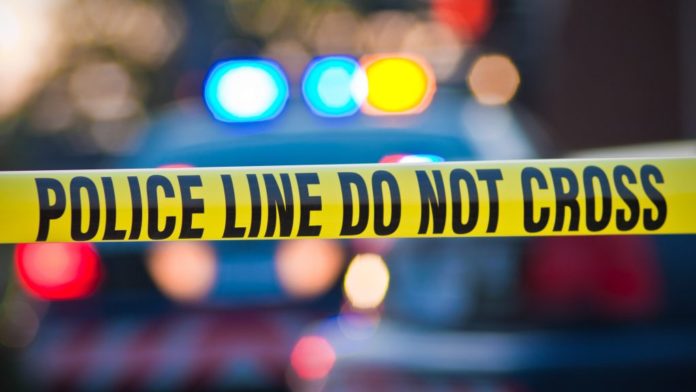
Minnesota reported a record number of murders for a second consecutive year as violent crime continued to surge, a trend seen nationwide and one coinciding with the economic and social disruptions of the coronavirus pandemic.
In its 2021 uniform crime report released Friday, the state Bureau of Criminal Apprehension reported 201 murders, an 8.5% annual increase, and a 21.6% increase in violent crime. The previous murder record was set in 2020, when Minnesota had 185 murders — a 58% increase from the 117 reported in 2019. A 17% increase in violent crime that year accompanied the jump in murders.
Before 2020, Minnesota’s highest number of murders was last reported in 1995, when Minneapolis saw a significant surge in violence tied to gangs amid the crack cocaine epidemic. That year there were 183 murders, according to the Department of Public Safety. Minnesota’s population has grown by 1.1 million people since the mid-1990s.
The Twin Cities metropolitan area saw a significantly higher increase in violent crime than greater Minnesota in 2021. The seven-county metro saw a 23.9% increase in violent crime compared with 16% in the rest of the state. Minneapolis reported a near-record 96 homicides in 2021, and St. Paul saw a record 38 homicides. Murder and other intentional killings are the two components of the “murder” count in the Minnesota Department of Public Safety’s annual crime report. In the criminal justice system, murder is a specific offense distinct from other homicides.
In early 2021, Minneapolis and St. Paul also had a rash of carjackings that eventually started to spread to the suburbs. The new crime report marks the first time the state has tracked carjackings. By the end of the year, the DPS had logged 779 carjackings statewide. More than 600 happened in Minneapolis, while fewer than 10 occurred in greater Minnesota outside the seven-county metro of Anoka, Carver, Dakota, Hennepin, Ramsey, Scott and Washington counties, the report showed.
While Minnesota law enforcement agencies have not historically tracked carjackings as a specific crime, 2021 saw 14,829 vehicles stolen — the highest total in 20 years and an 8.5% increase from the year before.
Other notable trends:
- There was a 22.7% increase in aggravated assault cases in 2021, with more than 10,967 offenses reported.
- The number of rapes increased from 2,222 to 2,472 in 2021.
- There were 900 incidents of peace officers being assaulted in 2021, up 35% from the previous year.
- Officer-involved shootings dropped from 29 in 2020 to 24 in 2021.
- A notable increase in arsons from 2020 continued. There were 716 in 2021, compared with 710 in 2020, when cases shot up by more than 50%.
- Bias crimes rose in 2021. Of the 238 incidents, 40.3% were anti-Black, 10.5% were anti-gay, and 8.8% were against whites. Antisemitic bias crimes made up 8.4% of the offenses.
- Property crimes such as burglary and larceny decreased slightly.
Federal and state authorities have already announced they would commit greater resources to combat violent crime and lawlessness in the metro area. U.S. Attorney Andrew Luger in April said he was shifting Minnesota federal prosecutors’ focus to tackling violent crime — including carjackings.
Gov. Tim Walz has already diverted state law enforcement resources, including state troopers and a dozen investigators from the BCA, to assist metro-area communities with tackling the surge in crime. But the governor said that approach could only last so long and would require action from Republican lawmakers to help fund continuing efforts.
Crime has become a central issue in the upcoming election in Minnesota, and Republicans quickly blamed Walz, a Democrat, for the crime surge.
“While Walz may try to hide his disastrous record with a Friday news dump, Republicans won’t let him get away with it,” Minnesota Republican Party executive director Mike Lonergan said in a statement, suggesting the Public Safety Department released the report right before the weekend in an attempt to bury the news. “Minnesota deserves better and we are looking forward to making Tim Walz a one-term governor in November.”
As part of their strategy for November, Minnesota Republicans have tried to characterize Democrats as anti-law enforcement and have advocated policies including increasing sentences for repeat offenders and boosting funding for law enforcement agencies. Walz has also proposed funding boosts for law enforcement and, at a Thursday news conference in downtown Minneapolis, called on Republican legislators to return to the bargaining table on public safety.
Lawmakers ended the regular session this year without an agreement on how to use the state’s historic $9.3 billion surplus, part of which could support law enforcement and community crime reduction programs. Negotiations for a special session between the Republican-controlled Senate, Democratic-Farmer-Labor-controlled House and Walz fell apart in June.








